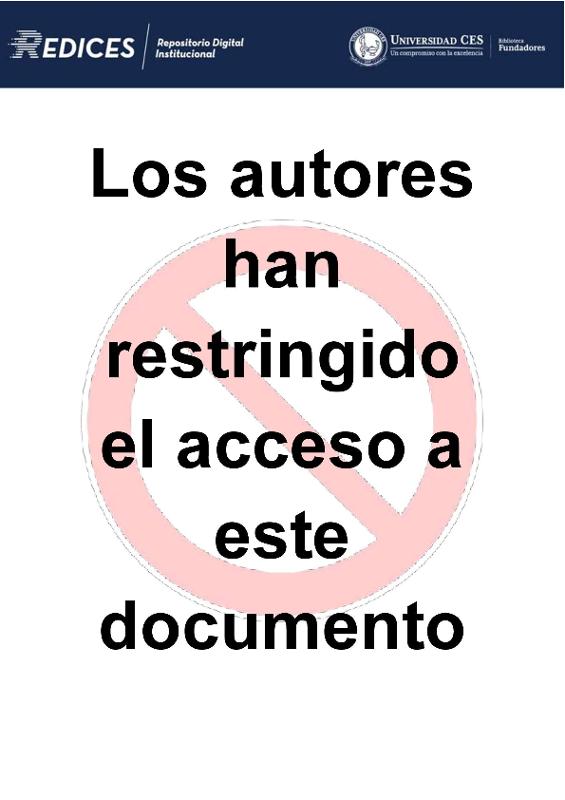Effect of cellular disruption of Arthrospira maxima on its biofertilizing and biostimulating activity
Date
2024-03-18
2024-03-18
Author
Fonseca López, Felipe
Jaramillo Atehortúa, María Antonia
Zapata Ocampo, Paola Andrea
Metadata
Show full item record
Show full item record
Abstract
Anthropogenic activities worldwide generate various environmental problems, primarily due to population growth. Consequently, the demand for food from the agro-industry has been compelled to increase the consumption of industrial fertilizers, which play a role in crop production. However, the bioaccumulation of their compounds in ecosystems, such as nitrogenous salts, generates negative repercussions on the soil. In this research, a more ecologically and economically viable solution was sought, based on the evaluation of cyanobacteria-based extract with biofertilizing and biostimulant properties, after the evaluation of three different disruption methods—sonication, bead milling and freezing—where it was determined which was the optimal method for the disruption of the intrinsic wall of the cyanobacteria and therefore obtaining soluble protein, which is the main component. For this purpose, cyanobacterial biomass disruptions were performed at a concentration of 30 g/L. In the case of sonication, different parameters were evaluated as a function of time (3, 5, 7, 10, 15 min) and power (300, 350, 400 W). Likewise, bead milling was evaluated by varying their diameter (4, 6 mm) and time (0, 18, 36, 54, 72 min), while the freezing method was evaluated by maintaining a constant temperature (-18 °C) but varying the time (0, 3, 5, 19 h). After disruptions, quantification of soluble protein was performed. The results indicated that the most effective method for disrupting the cyanobacterial Arthrospira maxima wall and obtaining the highest percentage of soluble protein (%SP) was sonication. Being a %SP of 69.38% ± 6.38 in a time of 15 minutes, followed by bead milling having a value of 39.98% ± 4 and 40.68% ± 3.62% for 6 mm and 4 mm beads respectively and finally freezing with results of 40.46% ± 48. Subsequently, the extract of the most optimal method was applied to the seedlings to be evaluated, which belonged to the basil species (Ocimum basilicum, Lamiaceae). This process was carried out twice a week for an interval of four weeks. During this period, seedling growth was evaluated using a macroalgae-based fertilizer (OptiMar Algas Marinas®) as a positive control and water as a negative control. The results showed that the seedlings treated with the extract containing A. maxima exhibited 33.58% higher growth compared both control groups in three of the four biometric measurements taken.Impacto
Collections
- Química Farmacéutica [77]

